How Can I Take a Hiking Backpack on a Plane?
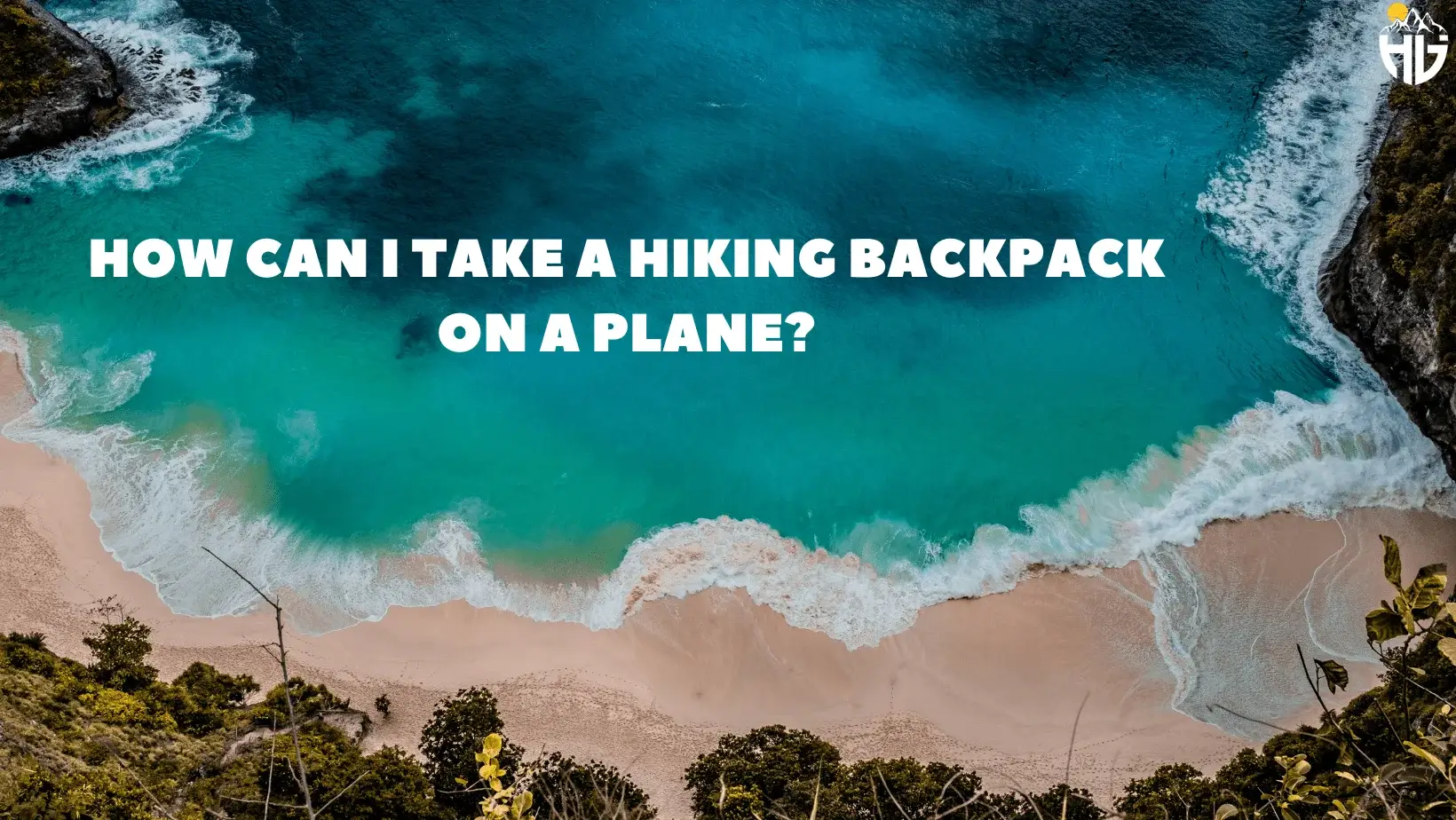
In this article, we’ll be looking closely at whether or not you can bring a hiking backpack on a plane. Moreover, the precautions you can take to guarantee a hassle-free and easy hiking trip. We’ll review everything, from TSA guidelines for carry-on and checked backpacks to important advice.
Read on to learn everything you need to know about traveling with a hiking backpack. Whether you’re a seasoned traveler or a first-time backpacker. Once you’ve finished reading this article, you’ll have the knowledge and assurance necessary to travel successfully with your rucksack.
TSA Guidelines for Backpacks
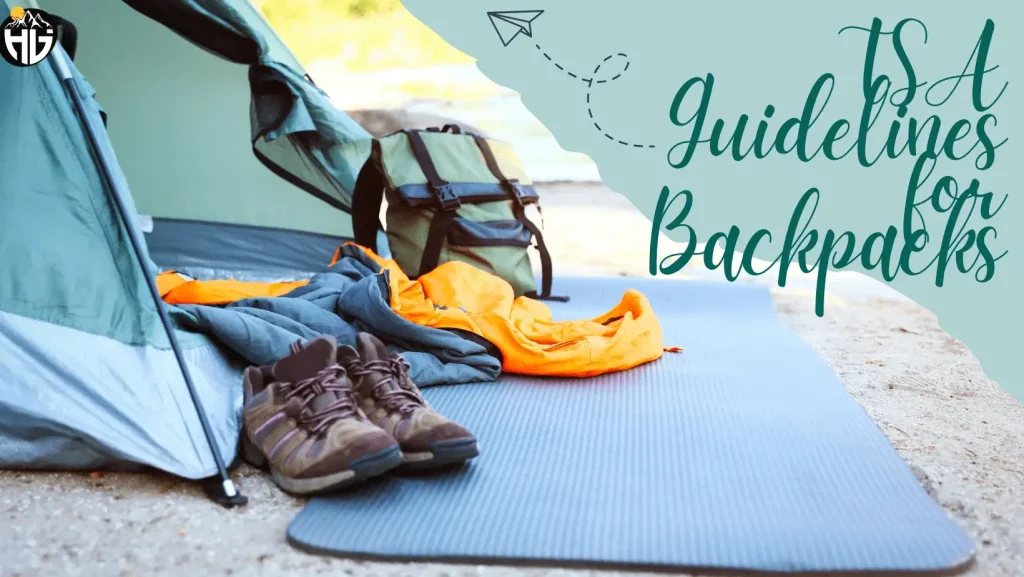
Travelers who want to keep their belongings close at hand during their flight frequently opt for carry-on backpacks. Before taking your hiking backpack on a plane, it’s crucial to remember that the TSA has strict regulations about different aspects of a backpack.
| Carry On Luggage VS Checked Luggage | Carry On Luggage | Checked Luggage |
| Size Restrictions | Carry-on backpacks must fit in the overhead compartment or under the seat in front of you. Your backpack’s maximum size shouldn’t exceed 22 by 14 by 9 inches. | There are typically no size restrictions for checked luggage. However, it’s crucial to remember that oversized backpacks might result in extra charges, so be sure to ask your airline for their specific policies. |
| Weight Restrictions | Depending on the airline, the maximum weight for a carry-on backpack is typically between 40 and 50 pounds. | Depending on the airline, the maximum weight for a checked luggage can range from 50 to 70 pounds. |
| Prohibited items | Some items, such as liquids weighing more than 3.4 ounces, sharp objects, firearms, and explosives, are prohibited in carry-on backpacks. Before you pack your rucksack, reviewing the TSA website for a complete list of prohibited items is crucial. | Like carry-on backpacks, checked baggage is not permitted to carry certain items, such as weapons, explosives, and flammable materials. Before you pack your rucksack, reviewing the TSA website for a complete list of prohibited items is crucial. |
| Suggestions for packing | To organize your belongings, think about using packing cubes, and don’t bring any forbidden items. To further prevent damage during the flight, pack any expensive or irreplaceable gear in a protective case or pouch. | Use compression bags or packing cubes to organize your belongings and make your backpack smaller. To avoid damage during the flight, packing any delicate items in a protective case or pouch is crucial. |
Check the TSA website for the most current rules and regulations before leaving for the airport with your carry ons.
Can I Take a Hiking Backpack on a Plane?

After discussing the TSA regulations for both checked and carry-on backpacks, let’s dive into the main question at hand:
Yes, you can bring a hiking backpack on a plane to give you a quick answer. To ensure your rucksack is properly packed , remember the policies established by the TSA and your airline.
There are a few considerations when taking a hiking backpack on an airplane.
- Follow the size and weight limits that the TSA and your airline set forth if you’re carrying it on.
- Ensure your rucksack is packed tightly and that any valuable or fragile items are secured before checking it.
- Purchase a TSA-approved lock to guard against unauthorized access to your backpack while it is transported.
- Before you pack your rucksack, check the complete list of prohibited items on the TSA website.
You can bring a hiking backpack on a plane, but always follow the TSA guidelines. You can enjoy your air travel adventure with your dependable hiking backpack by your side.
Choosing the Right Hiking Backpack for Air Travel
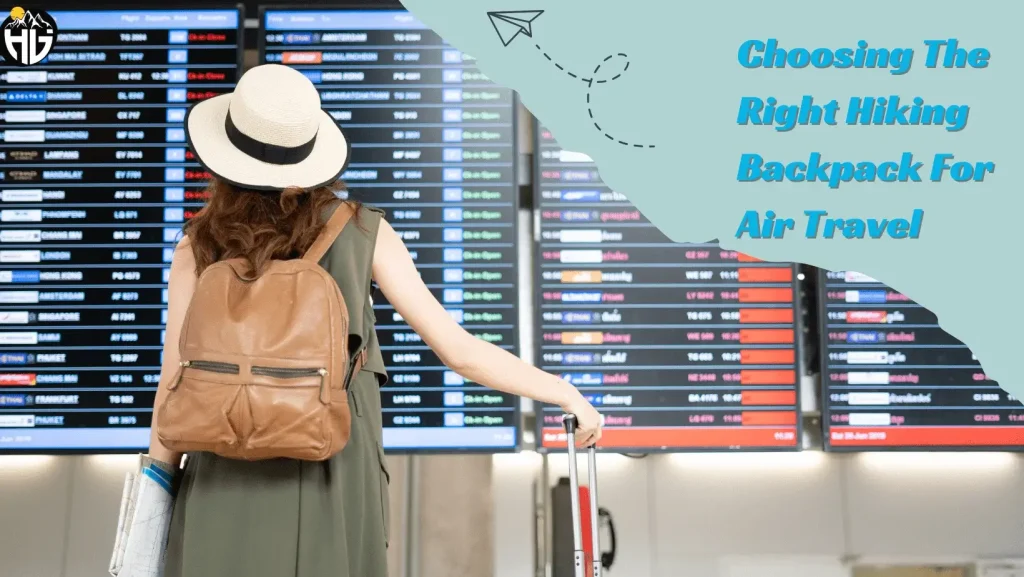
When selecting the ideal rucksack for your air travel adventure, keep the following in mind:
Types
There are three main categories of hiking backpacks to take into account when flying:
Daypacks: Daypacks are compact backpacks made for day hikes and shorter excursions. They are ideal for transporting necessities like water, snacks, and extra layers of clothing and typically have a capacity of 20 to 30 liters. Daypacks are a great option for air travel because they are lightweight and convenient to bring on board.
Overnight Packs: Overnight packs have a 35 to 50-liter capacity and are made for overnight trips. They can hold a sleeping bag, tent, and other camping supplies and are bigger than daypacks. Overnight packs are a good choice for air travel if you want to go camping or backpacking while on vacation.
Extended Backpacks: They have a capacity of 50 liters or more and are made for longer backpacking excursions. They can transport all the gear required for lengthy journeys, including food, water, and camping supplies. Extended trip packs are a good choice for air travel if you intend to go backpacking for a considerable amount of time.
What to Look for in an Air Travel Backpack
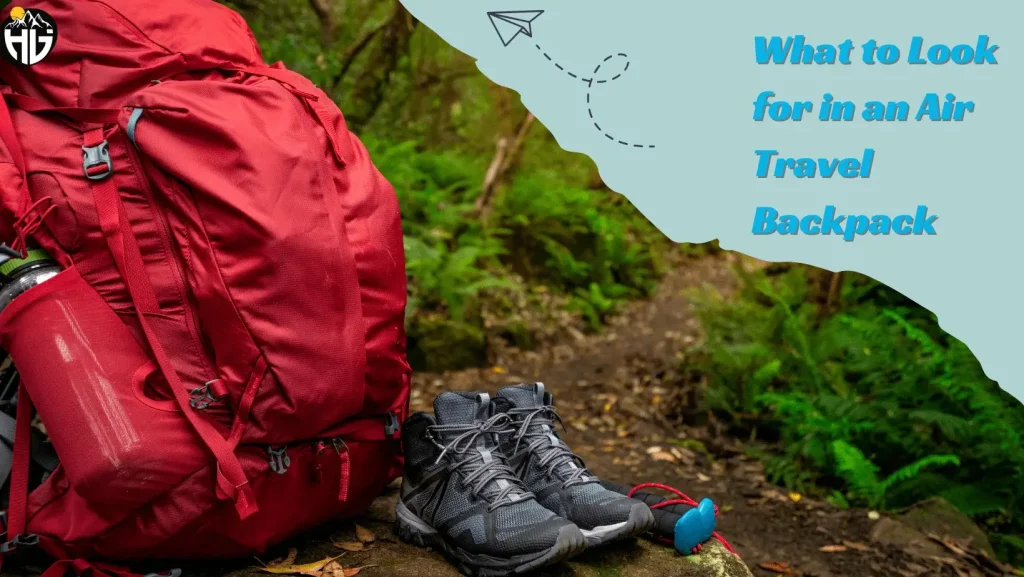
Look for bags that include:
- For added comfort, there are padded shoulder straps and a waist belt.
- Several pockets and compartments for organization
- A hydration system for convenient access to water while traveling
- A TSA-friendly design with features like a separate laptop compartment that makes it simple to remove during screening
Pick a backpack from a reputable brand, like Osprey, Deuter, or Gregory. Also, look for features like padded shoulder straps, multiple compartments, and a TSA-friendly design.
How to Pack a Hiking Backpack for Air Plane
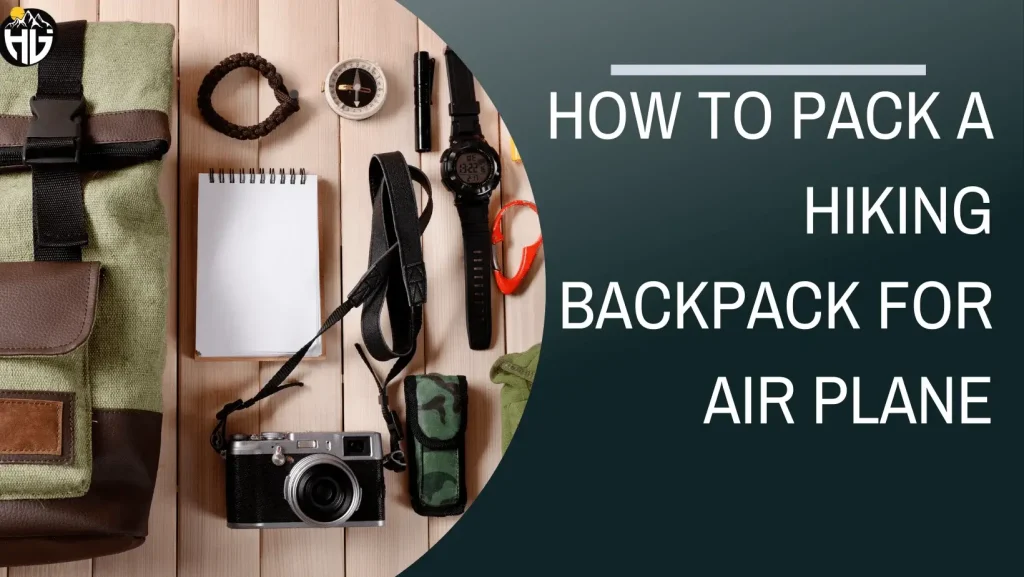
Packing a hiking backpack for air travel can be difficult, but with a little planning and effectiveness, it can be a stress-free process. The following advice will help you prepare your hiking backpack for air travel.
Choosing the Right Gear
When preparing for an airplane trip, selecting the proper gear is crucial. Pack based on the duration and nature of your trip. Pack only what is necessary rather than extraneous items that will weigh you down and take up space in your rucksack.
Organizing and Compressing Gear
It is essential to make the most of the small amount of space in your backpack. Use packing cubes or stuff sacks to maintain your gear’s organization and compression. To save space and avoid wrinkles, roll your clothing items tightly. Utilize compression straps on your backpack to stabilize your gear during the flight by compressing it.
Tips for Packing Efficiently
Here are some additional suggestions for effective air travel packing:
- Place your heaviest items at the bottom of your bag to distribute weight evenly and keep your rucksack from tipping over.
- Put small items like socks or pants in the space inside your shoes.
- For TSA screening, place your liquids in a transparent plastic bag that is easily accessible.
- Put valuables or delicate items in a separate, padded compartment to protect them during the flight.
In conclusion, packing a hiking backpack for an airplane trip necessitates thoughtful consideration of the equipment you bring, organization, and effective packing methods. Pack only what is necessary to reduce weight and space and leave out any extras.
Use packing cubes or stuff sacks to maintain your gear’s organization and compression. To keep your gear stable during the flight, place your heaviest items at the bottom of your backpack and use compression straps.
If you stick to this advice, you’ll be well on your way to a stress-free and enjoyable hiking adventure with your rucksack by your side.
What to Add in Your Hiking Backpack for Air Travel
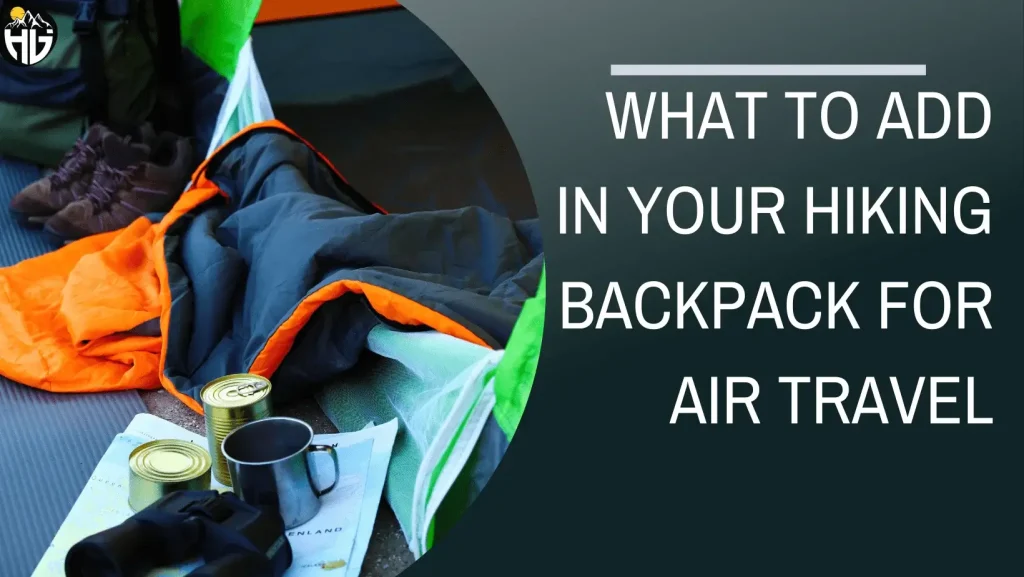
It’s crucial to consider your trip’s necessities when packing your hiking pack for air travel. You should pack the following items in your hiking backpacks:
Hiking Equipment
Regarding hiking equipment, bringing the items you’ll need for your particular hike is crucial. This could include hiking poles, a water bottle or hydration system, a first aid kit and a headlamp or torch. To aid in trail navigation, bringing a map, compass, or GPS device is a good idea.
Hiking Boots
Choosing a pair of supportive and comfortable hiking boots is one of the most important things you can pack for a hike. Bring your hiking boots with you on the plane to conserve space in your backpack.
Hiking Clothes
Bring hiking attire that is cozy, breathable, and appropriate for the local climate. Pack a few thin, simple layers to take off or add as the weather changes.
Food
Bring food that is portable, non-perishable, and simple to prepare. Popular choices for hiking excursions include trail mix, energy bars, and freeze-dried meals.
Waterproof Items
Pack waterproof items like a rain cover for your backpack. A waterproof jacket and a dry bag for your electronics and other items that can protect your things.
Insects Repellent Container
If you do choose to pack insect repellent, there are certain regulations you’ll need to follow to bring it on the plane. According to TSA guidelines, insect repellent containers that are 3.4 ounces or less are allowed in carry-on bags.
Larger containers of insect repellent must be placed in checked bags. It’s also important to note that aerosol insect repellent is not allowed in carry-on or checked bags.
Sleeping Pads
When packing a sleeping pad, it’s important to consider its size and weight. Sleeping pads can range in size from small and compact to large and bulky. So choose a pad that will fit comfortably in your backpack without taking up too much space.
Bonus Tip: How to Air Travel with a Hiking Backpack?

While convenient and enjoyable, flying with a hiking backpack necessitates careful planning and preparation. The following advice will help you travel by air while carrying a hiking backpack:
Preparing for Security Checkpoints
- Knives and other sharp objects are prohibited, so remove them from your backpack.
- Put your liquids in a transparent plastic bag.
- Take your laptop and other electronics out for TSA inspection.
- Wearing slip-on shoes will also help the security checkpoint process go more smoothly.
Handling Your Backpack During the Flight
Depending on the size of your backpack, you may need to check it as baggage or carry it on board as a carry-on item. If you bring it on board, put it in the overhead bin or under the seat. Keeping your backpack organized and closed is crucial to prevent any items from shifting or falling out during the flight.
Tips for International Travel
Packing a hiking rucksack for an international trip necessitates additional planning and preparation. Find out about the airline’s baggage rules and restrictions and the country’s immigration and customs procedures. Ensure that your travel documents, including your passport, are current and simple to find. Packing a small daypack is a good idea to carry necessities like water bottles and snacks during your trip.
Conclusion
It is possible to bring a hiking backpack on a plane, but several important considerations exist. The TSA regulations for both carry-on and checked backpacks and the precise size and weight limitations of your airline must be understood.
Preparation is essential when taking a backpack on an airplane. Make sure to familiarize yourself with your airline’s baggage regulations and pack your rucksack appropriately. Additionally, it’s critical to be knowledgeable about security procedures and have all the required documentation.
Frequently Asked Questions
Can I Bring a 50L Hiking Bag on a Plane?
bags may vary between airlines, so it’s important to check the specific airline’s regulations.
If your 50L hiking backpack meets the size and weight restrictions set by the airline, then you should be able to bring it on the plane as a carry-on bag. If your backpack is too large or heavy, it may need to be checked in as checked luggage.
Generally speaking, most airlines allow passengers to bring a carry-on bag that measures no more than 22 inches x 14 inches x 9 inches, which includes hiking backpacks. However, the weight limit for carry-on
Can I Fit My Hiking Bag Under My Plane’s Seat?
Most airlines have specific size limitations for carry-on bags that can fit under the seat. Generally, carry-on bags that are smaller than 22 inches x 14 inches x 9 inches are more likely to fit under the seat. However, if your hiking bag is larger than this size, it may not fit under the seat and may need to be placed in the overhead bin.
It’s important to note that the space under the seat may vary depending on the specific airplane and seat location. Some seats may have more room than others, and some airplanes may have different configurations that affect the available space.
Is a 60L Backpack Too Large for a Plane?
A 60L backpack can be considered quite large for air travel, especially if you plan on using it as a carry-on bag. Most airlines have specific size and weight restrictions for carry-on bags, and a 60L backpack may exceed these limits.
It’s important to check with your airline for their specific guidelines on carry-on luggage. Generally, carry-on bags should be small enough to fit in the overhead compartment or under the seat in front of you. For many airlines, carry-on bags cannot exceed 22 inches x 14 inches x 9 inches in size, and should not weigh more than 7-10 kg (15-22 lbs).
Can I Take My Backpack as a Carry in an Airplane?
Whether you can take your backpack as a carry-on on an airplane depends on the airline’s policy and the size of your backpack. Most airlines allow one carry-on bag per passenger, with specific size and weight restrictions.
If your backpack fits within the airline’s carry-on size restrictions and does not exceed the weight limit, you can take it as a carry-on bag. However, if your backpack is too large or exceeds the weight limit, you may need to check it in as a checked bag instead.
Related Posts
Are Bean Boots Good for Hiking? A Guide To Answer
Exploring Hiking Boots with Red Laces: Why and Which Ones?
Why Are Hiking Boots so Ugly? 5 Reasons You Must Know
How to Tell if Hiking Boots are Too Big

M Fahad Sajjad
Founder & CEO
at
Meraki Writes
Meraki Writes is a distinguished content marketing agency committed to delivering exceptional content for businesses and online platforms.
With a dedicated team of skilled writers and editors, Meraki Writes
consistently produces high-quality articles, ensuring client satisfaction
and audience engagement. The same team of professionals is responsible
for crafting each insightful and well-researched article on Hike Genius, a reputable hiking niche website.









